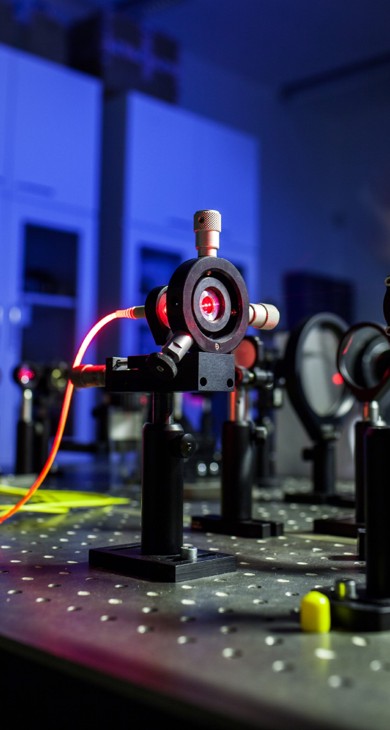
Te Whai Ao - Dodd-Walls Centre
Curious about the interaction of light and matter, we’re exploring fundamental questions and enabling better communication, computing and sensing.
Who We Are
Te Whai Ao — Dodd-Walls is a Centre of Research Excellence, home to world-renowned investigators from seven institutions. We are internationally recognised researchers in photonic and quantum technologies.
Curious about the interaction of light and matter, we’re exploring fundamental questions and enabling better communication, computing and sensing.
Our unique strength lies in our people, whose continuum of skills range from theoretical science to translation for commercial use. The collaboration between them aids the understanding of key aspects of quantum photonics and enhances our outcomes. Our mission is to advance globally distinctive research to future-proof critical capabilities and infrastructure for Aotearoa’s economy and well-being.
Our Capability
Our experts in the control and manipulation of single atoms are creating quantum memories for space-based quantum communications networks and we’re working to link quantum computers. Our sensing expertise includes the creation of tiny, low-cost devices for environmental monitoring, biomedicine, astronomy and manufacturing.
In addition to our human capital, we have world leading infrastructure at our disposal. This includes New Zealand’s coldest fridge - a cryostat at Otago University which enables work with individual microwave photons. We have two laser micro-machining fabrication facilities, one at Otago and the other at the University of Auckland. The University of Canterbury is host to a unique ring-laser gyroscope. We use New Zealand’s most powerful high temperature superconducting magnets at Wellington’s Paihau Robinson Institute, and we enjoy access to the Australian synchrotron’s high- powered beamlines.
Selected Projects
Communications
We build “quantum memories” - devices which can store and recall light in a way that preserves its precise quantum state. These have applications in secure communication, sensing and distributed quantum networks. We are also developing technologies to improve communications between spacecraft and Earth. We have created a laser-based method of transmission, relying on a free-space optical communication node as part of a network of optical telescopes across Australasia.
Computing
There’s a global race to develop the first scalable fault tolerant quantum computer and link it to others in a network. Some quantum computing platforms use microwave photons as quantum information. These operate at extremely cold temperatures. Our team converts these photons into the optical domain where optical fibre works at room temperature. The team expects to reach high enough efficiency, to make the quantum internet a reality. In a separate project we’re exploring the use of Ising machines to solve problems faster than a classical computer can. Rooted in quantum mechanics, Ising machines can swiftly provide the optimal solution to certain problems.
Sensing
Optical micro-resonators or microcombs are highly precise measurement tools to survey, map and measure. We’re trying to make them as small and efficient as possible, even to integrate them with a laser on a single chip for mass production. Sensors are also used for space-based environmental monitoring, high precision processes in electronics and micro-optical device manufacture. Making them smaller also makes them less expensive.
We combine sensing and imaging to create bespoke technology solutions for health, agriculture, horticulture and the manufacturing sectors. They can provide minimally invasive diagnosis and precision treatment.
We’re also investigating how lasers and sensors operate when subjected to extreme radiation and temperatures. This work could find application in major commercial clean-tech industries such as fusion energy systems, clean-aviation, power generation and space exploration.
Our Collaborators
Te Whai Ao — Dodd-Walls Centre partners with researchers around the globe. Our colleagues are based at some of the world’s most prestigious institutions and organisations.
These include:
Max Planck Institutes in Germany, NASA, the German Aerospace Centre, Singapore’s Centre for Quantum Technologies, the UK’s National Physical Laboratory, Japan’s Science and Technology Agency, and the French National Research Agency as well as Australia’s universities and centres of research excellence in photonic and quantum technologies.
People working in this area
Click on a person for additional information

